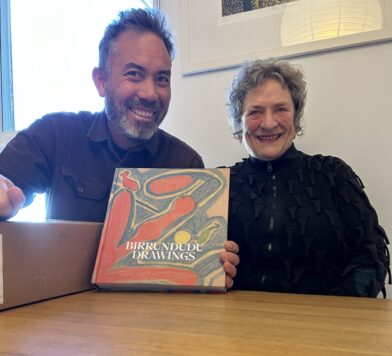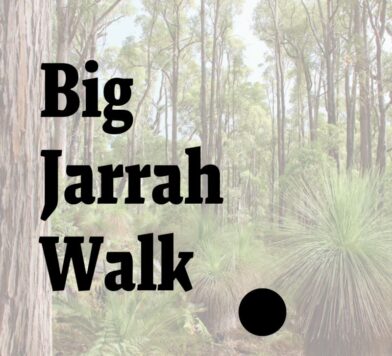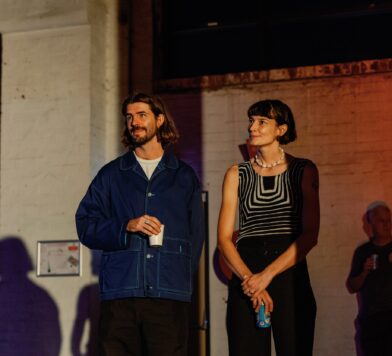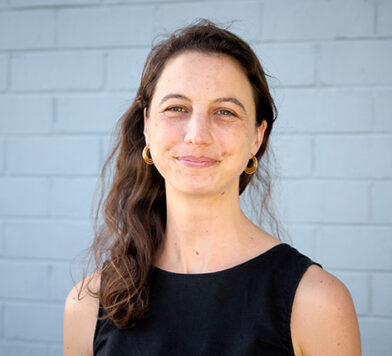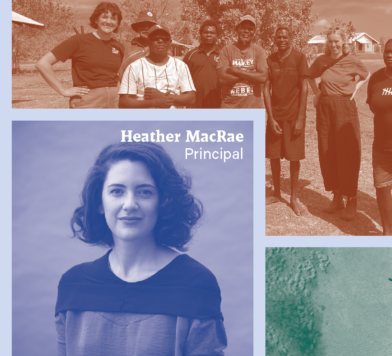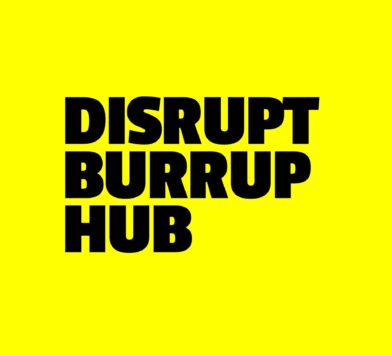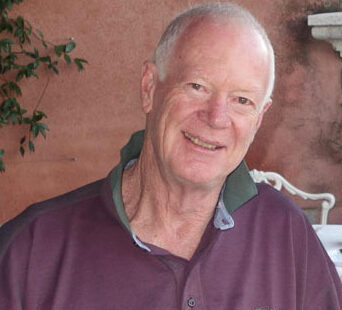Community Health and the Promise of Democracy
Andrew Broffman is a Principal at TF.A and leads our Sydney agency. In this article, Andrew unpacks the links between the state of health infrastructure, the principal of democracy and potential of self-determination.
In 1985 Indigenous rights activist and anti-nuclear campaigner Yami Lester, a Yankunytjatjara man born at Walyatjata in South Australia, challenged a group of young professionals (a doctor, an architect, an anthropologist) ‘to stop my people getting sick’. Yami Lester’s provocation lead to the creation of Healthabitat and the establishment of the 9 Healthy Living Practices that today remain the benchmark for assessing the health hardware of Indigenous housing in Australia. (1)
32 years later, in May 2017, two months before Yami Lester died, Indigenous leaders met in the central desert and composed the Uluru Statement From the Heart, a declaration that sought recognition of First Nations peoples through a voice to Parliament, agreement making and truth telling.
These events share a relationship between health and democracy, an affinity that is particularly relevant today as we grapple with the Coronavirus pandemic and seek an understanding of what comes next
Much has occurred in Indigenous housing since Yami Lester posed his challenge. Not all of it has been good. The lessons learned, however, include an understanding that investment in appropriate housing and infrastructure – culturally considered, well designed and constructed, appropriately managed and maintained – will contribute to healthier lives for Indigenous people living in regional and remote communities and urban areas across Australia.

We have also learnt that Indigenous housing and infrastructure decisions are strongest when the voices of those who are most affected shape the considerations and determine the directions of housing and health policy.
We have also learnt that Indigenous housing and infrastructure decisions are strongest when the voices of those who are most affected shape the considerations and determine the directions of housing and health policy. The ability to make decisions about the things that affect our lives is, after all, the foundation of democracy for all its citizens. Work that occurs in Indigenous communities must be understood as part of that larger project of democracy – self-determination.
Like housing, the state of health infrastructure more broadly within a community and across a region is an indicator of the strength or weakness of local decision-making processes. In those places where health is poor, democracy is also likely to be weak. Links have been established, for example, between infant mortality and democratisation in sub-Saharan Africa. And in Brazil it has been found that there is a clear relationship between heightened political participation and increased public spending on health care. (2)

https://www.theguardian.com/australia-news/2018/apr/09/the-fight-never-left-stolenwealth-games-protesters-draw-on-long-tradition
At the community scale, consider the things that affect healthy places: functioning water supply, clean sewage disposal, appropriate waste management, serviceable transportation networks, reliable communications systems, resourced health facilities, and continuity in the delivery of professional and culturally competent health services. When these are not working, engagement with systems of decision-making will also suffer and community acceptance of government directions will be weakened. In the context of Covid-19 and restrictions on movement, “[w]hile autocratic regimes tend to take more stringent policy measures, such measures tend to be less effective in reducing mobility in autocratic countries compared to democracies. Comparing countries with a collectivist versus an individualist culture shows that the former have been more successful in taking measures to reduce mobility.” (3)
The Coronavirus pandemic has exposed both the fragility of public health systems around the world and the relative strengths of democratic institutions. In Australia, the response to the pandemic was early, decisive and largely accepted by the wider Australian public. But for communities of First Nations peoples, government responses were slow and often confusing. Where governments had once suggested that Indigenous communities were ‘cultural museums’ with no future (4), now they were telling Indigenous Australians to return to their communities. Where restrictions were being lifted in nearby urban centres, conflicting policies across Commonwealth biosecurity powers and state and territory border controls added to the uncertainty. (5)
Instead, it was Indigenous leaders and community health organisations that disseminated the important messages around hygiene and social distancing, demonstrating a resolve to manage exposure to the virus when governments have only been able to respond with the blunt tool of quarantine.

By Jimmy Widders-Hunt when the Uluru Statement was endorsed at the First Nations’ National Constitutional Convention at Uluru, 23-26 May 2017
The Carnegie Endowment for Peace has stated that, “Civil society groups mobilizing responses on the front lines of the pandemic may reinforce democratic vitality at the local level.” (6) As restrictions are eased and the country emerges into the next phase of response, we should look to First Nations communities not only for guidance in building pandemic resilience but for reframing the quality of Australian democracy itself. The Uluru Statement From the Heart, with its democratic claims for Voice, Treaty and Truth, might frame this next phase.
In a recent article entitled Governing the Pandemic, Diane Smith concludes that “[a]rrangements for the establishment of a future national representative Indigenous body should recognize the foundation stone of capacity and resilience that exists within Indigenous polities, communities and their organisations, and ensure they are given a real voice in future national decision-making and recovery initiatives.”(7)
Finding marginalised people at the vanguard of democracy may be surprising, but it is not unusual. In her incisive essay, “The Idea of America,” for the 1619 Project on the stifling impacts of slavery on American democracy, Nikole Hannah-Jones argues that African Americans have been the true torch bearers of democracy in the United States. Despite America’s violent history of slavery, African Americans have continued to insist that America live up to its promise of democracy and equality. “More than any other group in this country’s history,” Hannah-Jones states, “we have served, generation after generation, in an overlooked but vital role: It is we who have been the perfecters of this democracy.” (8)
In Australia, too, First Nations peoples have been leading the way. From Yorta Yorta elder William Cooper’s petition for Aboriginal representation in federal Parliament in 1937, to the Yirrkala Bark Petition in 1963, to the Freedom Rides of 1965, to the Referendum of 1967, to Yami Lester’s advocacy for the Marlinga Tjarutja people in 1985, to the Barunga Statement in 1988 and beyond, Indigenous Australians have patiently held out hope for equality, fairness and opportunity. The Uluru Statement From the Heart continues that effort, and offers a mirror to Australia’s democratic claims. The Uluru Statement asks the nation to live up to its ideals, a declaration that will ultimately benefit us all.
Healthier communities will underpin this aspiration as a necessary condition for political agency to thrive. And advocacy for healthy people and places can only be effective where democracy is strongest. As Australia looks to its immediate and long term future, the Uluru Statement From the Heart is a gift to all Australians, a way of imagining who we might be as a nation.
(1) https://www.healthabitat.com/who-we-are/timeline/
(2) Esteban Ortiz-Ospina, Esteban, “Does democracy lead to better health?” https://ourworldindata.org/democracy-health, 24 June 2019.
(3) Carl Benedikt Frey, Giorgio Presidente, Chinchih Chen , “Covid-19 and the future of democracy,” 20 May 2020 https://voxeu.org/article/covid-19-and-future-democracy
(4) https://www.abc.net.au/news/2005-12-09/vanstone-questions-future-of-indigenous-cultural/757866
(7) Smith, Diane, “Governing the pandemic: Implications for Indigenous self- determination and self-governance” in Markham, F., Smith, D. & Morphy, F., Indigenous Australians and the COVID-19 crisis: perspectives on public policy, Topical Issue no. 1/2020, Centre for Aboriginal Economic Policy Research, Australian National University, Canberra. https://doi.org/10.25911/5e8702ec1fba2
(8) Nikole Hannah-Jones, “The Idea of America,” The 1619 Project, New York Times Magazine, August 14 2019. https://www.nytimes.com/interactive/2019/08/14/magazine/black-history-american-democracy.html
Articles / Blog

05 Aug, 2025
Birrundudu Drawings
By Emma Brain

09 Jul, 2025
B Corp Success – Again!
By Emma Brain

21 May, 2025
Raising funds to protect our forests
By Emma Brain

15 May, 2025
Vessel Contemporary
By Emma Brain

07 May, 2025
2025 National President’s Prize
By Emma Brain

08 Apr, 2025
TFA Xmas Donation
By Emma Brain

25 Mar, 2025
Christina Fogale joins TFA!
By Emma Brain

06 Feb, 2025
Promotions and Expansion at TFA!
By Emma Brain

29 Jan, 2025
TFA Donates to the Save Burrup Hub Campaign
By Emma Brain

23 Jan, 2025
Vale Richard Longley
By Emma Brain

21 Jan, 2025
Exciting news from the TFA grants team!
By Emma Brain

11 Dec, 2024
Kaya Birak + 2024 Impact Statement!
By Emma Brain
